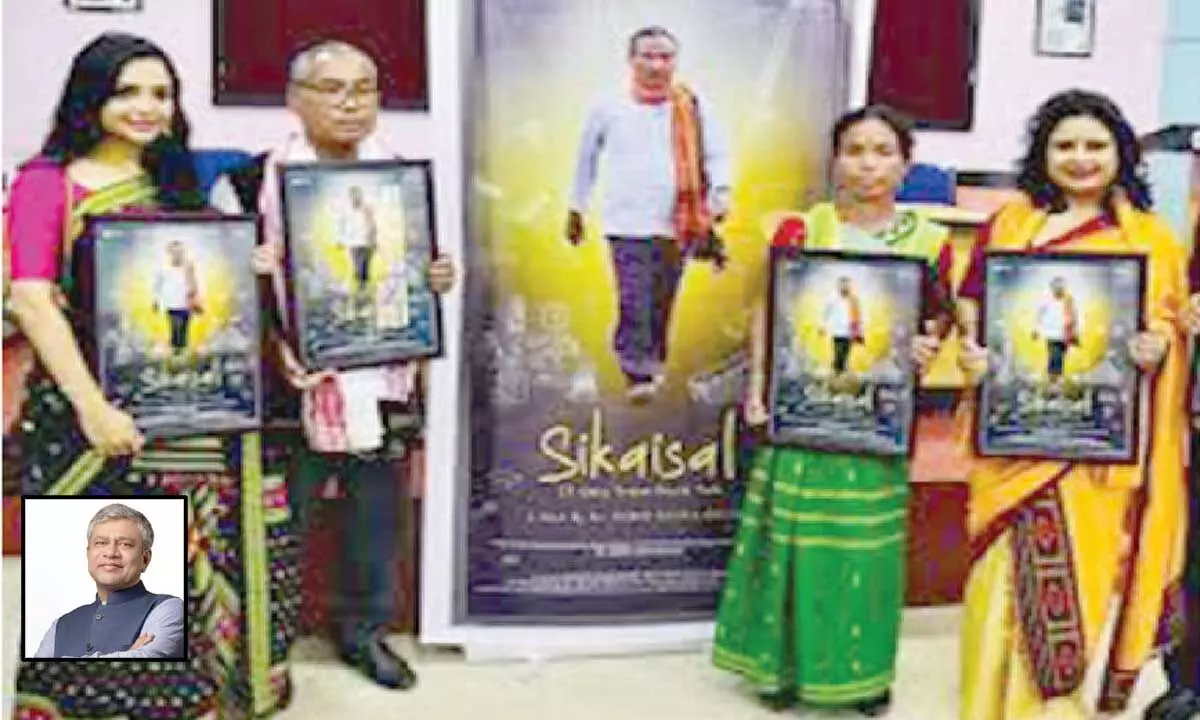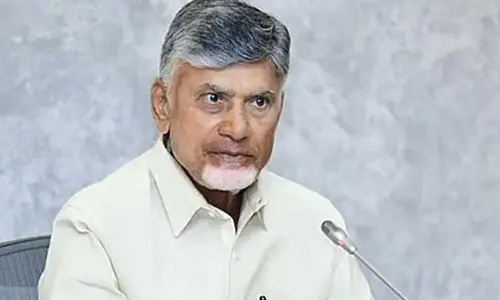The Unifying Power of Indian Films

The uniqueness of the National Film Awards is evident in the fact that among the Best Film winners is ‘Sikaisal’ (If Only Trees Could Talk), a film made in the Tiwa language. This is the language of the Tiwa people, a Tibeto-Burmese ethnic group whose members are found across India’s north-east, and in Bangladesh and Myanmar
Ashwini Vaishnaw
There is no denying that Bollywood films have made Hindi widely acceptable. But that is only one big impact of films on diverse strands of Indian society. The second big impact is to make people aware of ‘other’ linguistic groups and identities, fostering a deep, abiding sense of unity in the diversity of ‘Ek Bharat, Shreshtha Bharat’. That’s more than a slogan when it comes to Indian cinema which showcases the unimaginably large community of creators who bring together their talent to create magical entertainment undergirded by universal beliefs across politics, society, culture and that unquantifiable thing we call morals and ethical values that bind us as a people, and the people as a nation
“Cinema speaks a universal language,” said filmmaker Satyajit Ray, capturing the essence of its unifying power. Indian cinema, with its vast linguistic and cultural diversity, brings together people from every corner of the country, allowing them to share in common emotions and experiences.
Whether it’s a Tamil drama, a Hindi blockbuster, or a Marathi indie film, cinema fosters a deep sense of belonging, bridging divides and reminding us that despite our differences, we are one. The universality of Indian cinema lies in its ability to transcend regional and linguistic boundaries, making it a powerful force for national unity.
From Raj Kapoor’s classics like Shree 420, which resonated across languages, to Mani Ratnam’s Roja, which found nationwide acclaim, Indian films speak a language of emotions that everyone understands. Films like M S Sathyu’s ‘Garam Hawa’ and Bimal Roy’s ‘Do Bigha Zamin’ remind us that stories of struggle, love, and triumph are not confined by borders, proving that cinema is truly a unifying force in India. It is this universalism of cinema that is celebrated every year when the best films, best directors and best actors are honoured with the National Film Awards by the President of India.
This is not an eye-dazzling, head-turning event which is usually what other such occasions are. It is an acknowledgement of talent – the talent of creators, story tellers and enactors. It is also an affirmation of India’s many-splendored, many-hued diversity of languages and dialects which together weave the magical tapestry of this great nation’s unity and continue to integrate nearly one and a half billion people who speak in hundreds of languages, and their several offspring dialects.
The uniqueness of the National Film Awards is evident in the fact that among the Best Film winners is ‘Sikaisal’ (If Only Trees Could Talk), a film made in the Tiwa language. This is the language of the Tiwa people, a Tibeto-Burmese ethnic group whose members are found across India’s north-east, and in Bangladesh and Myanmar. For the 70th National Film Awards, the government received 309 films in 32 different languages in the feature film category, and 128 films in 17 languages in the non-feature category.
In the feature film category, Golden Lotus Award was won by films from four Indian languages, one of them being in Haryanvi. Five films each from the Hindi and Tamil language won the Silver Lotus Award in this category, with films from Malayalam, Gujarati, Kannada, Haryanvi and Bengali also winning the award. The Silver Lotus Award was also conferred on ten films from the languages included in the Eighth Schedule of the Constitution of India. A film released in Hindi and Urdu won the Golden Lotus Award for the best non-feature film.
Much as the nihilists of language politics may argue, the fact remains that nearly 75 years after the making of the Republic of India with linguistic States, the barriers of the past have largely eroded over the decades. There is no denying that Bollywood films have made Hindi widely acceptable. But that is only one big impact of films on diverse strands of Indian society. The second big impact is to make people aware of ‘other’ linguistic groups and identities, fostering a deep, abiding sense of unity in the diversity of ‘Ek Bharat, Shreshtha Bharat’. That’s more than a slogan when it comes to Indian cinema which showcases the unimaginably large community of creators who bring together their talent to create magical entertainment undergirded by universal beliefs across politics, society, culture and that unquantifiable thing we call morals and ethical values that bind us as a people, and the people as a nation.
In fact, no Indian story has ever been told without these universal elements that underscore ethics, values and morals and which only the inner eye of the filmmaker and the viewer alone can discern. The two greatest stories ever told – Ramayan and Mahabharat – serve to prove this point. The other common strand in our cinema is the ease with which our filmmakers erase divisive markers that are at the core of societal, cultural and political disintegration. That is also the unique strength of the craft of story-telling in India: Be it art films, popular films, commercial films or the modern day challenger, OTT films, we are moved together, we applaud together and we celebrate together. ‘Naatu Naatu’, a song from the Telugu musical ‘RRR’ which has won an Oscar and a Golden Globe, proved to be a superhit not only in India but around the world, cutting through language, ethnicity and nationality.
To elevate Indian cinema on the global stage, the government is focusing on three core pillars: developing a robust talent pipeline, enhancing infrastructure for filmmakers, and simplifying processes to empower storytellers. The government recently announced the establishment of Indian Institute of Creative Technology (IICT), reflecting our commitment to fostering creativity, and ensuring that Indian cinema remains a powerful force in both national integration and global entertainment with adoption of the latest technologies of film making, immersive experiences and interactive entertainment.
As we look to the future, the role of cinema in Ek Bharat Shreshtha Bharat becomes even more significant. In a rapidly evolving world, Indian cinema continues to innovate and expand its horizons, telling stories that not only reflect our diversity but also envision a shared future. With every frame, Indian filmmakers push the boundaries of storytelling, ensuring that cinema remains a powerful catalyst for unity and progress in a connected, forward-looking India.
(Writer is Union Minister for Information and Broadcasting, Railways, Electronics and Information Technology)








